BLOG - Page 33
Recently created mixtures:

Sea-Buckthorn Macerated oil
February 7, 2019

Home made air freshener
June 29, 2016

Homemade Dog-rose distillate
June 28, 2016

Homemade jasmine distillate
June 22, 2016

Moxibustion treatment with Moxa stick
May 30, 2016

Face and body gentle oil cleanser
May 26, 2016
BLOG / LATEST ADDITIONS!
Benzoin Resin (Styrax Tonkinensis) ☸ Ingredients ☸ Base / General
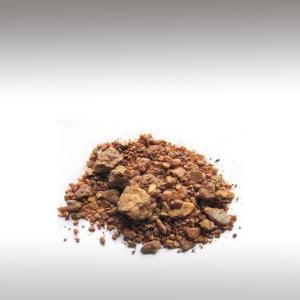

Styrax Benzoin is a species of tree native to Indonesia which is a main source of Benzoin resin. It is a common member of the forests of Sumatra, where it grows to about 12 meters in Maximum height. It is also cultivated in West Africa as a shade tree. Common names for the tree include gum Benjamin tree, loban(in Arabic), kemenyan (in Indonesia and Malaysia), onycha, and Sumatra Benzoin tree.
Benzoin resin or Styrax resin is a balsamic resin obtained from the bark of several species of trees in the genus Styrax.
Benzoin resin is a balsamic resin obtained from the bark of several species of trees in the genus Styrax. Commonly called "Benzoin", it is called "Benzoin Resin" here to distinguish it from the chemical compound Benzoin.
Benzoin resin or Styrax resin is a balsamic resin obtained from the bark of several species of trees in the genus Styrax.
Benzoin resin is a balsamic resin obtained from the bark of several species of trees in the genus Styrax. Commonly called "Benzoin", it is called "Benzoin Resin" here to distinguish it from the chemical compound Benzoin.
Benzoin resin does not contain this crystalline compound. Benzoin is also called gum Benzoin or gum Benjamin, but "gum" is incorrect as Benzoin is not a polysaccharide. Its name came via the Italian from the Arabic "Lubān Jāwī"("Frankincense from Java").
Benzoin resin is a common ingredient in incense-making and perfumery because of its sweet vanilla-like aroma and fixative properties.
There are two common kinds of Benzoin resin, Benzoin Siam and Benzoin Sumatra. Benzoin Siam is obtained from Styrax tonkinensis, found across Thailand, Laos, Cambodia, and Vietnam. Benzoin Sumatra is obtained from Styrax Benzoin, which grows predominantly on the island of Sumatra.
Gum Benzoin is a major component of the type of church incense used in Russia and some other Orthodox Christian societies. Most Benzoin is used in Arab Gulf countries and India, where it is burned on charcoal as an incense.
Benzoin resin is a common ingredient in incense-making and perfumery because of its sweet vanilla-like aroma and fixative properties.
There are two common kinds of Benzoin resin, Benzoin Siam and Benzoin Sumatra. Benzoin Siam is obtained from Styrax tonkinensis, found across Thailand, Laos, Cambodia, and Vietnam. Benzoin Sumatra is obtained from Styrax Benzoin, which grows predominantly on the island of Sumatra.
Gum Benzoin is a major component of the type of church incense used in Russia and some other Orthodox Christian societies. Most Benzoin is used in Arab Gulf countries and India, where it is burned on charcoal as an incense.
It is also used in the production of Bakhoor (scented wood chips) as well as various mixed resin incense in the Arab countries and the Horn of Africa.
Benzoin resin is also used in blended types of Japanese incense, Indian incense, Chinese incense, and Papier d'Arménie as well as incense sticks.
Submitted by OperaDreamhouse (September 17, 2014)
Benzoin Resin (Styrax Tonkinensis) ☸ Ingredients ☸ Spiritual Practises


Emotionally, Styrax Benzoin Absolute is calming and grounding. In Chakra work, it is a recommended oil for use with the Root Chaka.
Submitted by OperaDreamhouse (September 17, 2014)
Shea Butter (Butyrospermum Parkii) ☸ Base oils ☸ Base / General
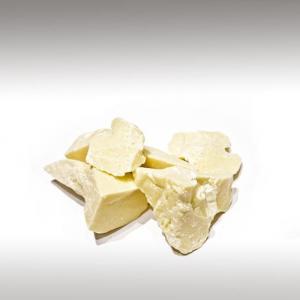

Vitellaria Paradoxa (formerly Butyrospermum Parkii), commonly known as Shea tree, Shi tree or Vitellaria, is a tree of the Sapotaceae family. It is the only species in genus Vitellaria, and is indigenous to Africa.
The Shea fruit consists of a thin, tart, nutritious pulp that surrounds
a relatively large, oil-rich seed from which Shea Butter is extracted.
The common name is Shíyiri or Shísu in the Bambara language of Mali. This is the origin of the English word, and is pronounced "Shee" to rhyme with "Tea". The tree is called Ghariti in the Wolof language of Senegal, which is the origin of the French name of the tree and the butter, Karité. In Hausa language the tree is called Kade or Kadanya.
The Shea tree is a traditional African food plant. The tree starts bearing its first fruit when it is 10 to 15 years old, full production is attained when the tree is about 20 to 30 years old. It then produces nuts for up to 200 years.
The Shea tree grows naturally in the wild in the dry savannah belt of West Africa from Senegal in the west to Sudan in the east, and onto the foothills of the Ethiopian highlands. It occurs in 19 countries across the African continent, namely Benin, Burkina Faso, Cameroon, Central African Republic, Chad, Ethiopia, Ghana, Guinea Bissau, Côte d'Ivoire, Mali, Niger, Nigeria, Senegal, Sierra Leone, Sudan, Togo,Uganda, Democratic Republicof the Congo, and Guinea.
A testa found at the site of the medieval village of Saouga is evidence of Shea Butter production by the 14th century.
The United States Agency for International Development, Gassel Consulting, and many other companies have suggested a classification system for Shea Butter separating it into five grades: A (raw or unrefined, extracted using water), B (refined), C (highly refined and extracted with solvents such as hexane), D (lowest uncontaminated grade), E (with contaminants).
The color of raw (grade A) butter ranges from cream (like whipped butter) to grayish yellow, and it has a nutty aroma which is removed in the other grades.
Grade C is pure white. While the level of vitamin content can be affected by refining, up to 95% of vitamin content can be removed from refined grades of Shea Butter while reducing contamination levels to non-detectable levels.
Chemical structure:
Shea Butter is composed of five principal fatty acids: palmitic, stearic, oleic, linoleic, and arachidic. About 85 to 90% of the fatty acid composition is stearic and oleic acids. The relative proportion of these two fatty acids affects Shea Butter consistency. The stearic acid gives it a solid consistency, while the oleic acid influences how soft or hard the Shea Butter is, depending on ambient temperature.
The proportions of stearic and oleic acids in the Shea kernels and Butter differ across the distribution range of the species. Ugandan Shea Butter has consistently high oleic acid content, and is liquid at warm ambient temperatures. It fractionizes into liquid and solid phases, and is the source of liquid Shea oil.
Thefatty acidproportion of West African Shea Butter is much more variable than Ugandan Shea Butter, with an oleic content of 37 to 55%. Variability can be high even locally, and a tree that produces hard butter can grow with one that produces soft butter. Nuts are gathered from a wide area for local production, so Shea Butter consistency is determined by the average fatty acid profile of the population. Within West Africa, Shea Butter from the Mossi Plateau region of Burkina Faso has a higher average stearic acid content, and so is usually harder than Shea Butter from other West African regions.
It has a high lipid profile, also containing beneficial phytochemicals (Vitamin A). It also contains oleic acid (omega - 9 monounsaturated fatty acid).
The common name is Shíyiri or Shísu in the Bambara language of Mali. This is the origin of the English word, and is pronounced "Shee" to rhyme with "Tea". The tree is called Ghariti in the Wolof language of Senegal, which is the origin of the French name of the tree and the butter, Karité. In Hausa language the tree is called Kade or Kadanya.
The Shea tree is a traditional African food plant. The tree starts bearing its first fruit when it is 10 to 15 years old, full production is attained when the tree is about 20 to 30 years old. It then produces nuts for up to 200 years.
The Shea tree grows naturally in the wild in the dry savannah belt of West Africa from Senegal in the west to Sudan in the east, and onto the foothills of the Ethiopian highlands. It occurs in 19 countries across the African continent, namely Benin, Burkina Faso, Cameroon, Central African Republic, Chad, Ethiopia, Ghana, Guinea Bissau, Côte d'Ivoire, Mali, Niger, Nigeria, Senegal, Sierra Leone, Sudan, Togo,Uganda, Democratic Republicof the Congo, and Guinea.
A testa found at the site of the medieval village of Saouga is evidence of Shea Butter production by the 14th century.
The United States Agency for International Development, Gassel Consulting, and many other companies have suggested a classification system for Shea Butter separating it into five grades: A (raw or unrefined, extracted using water), B (refined), C (highly refined and extracted with solvents such as hexane), D (lowest uncontaminated grade), E (with contaminants).
The color of raw (grade A) butter ranges from cream (like whipped butter) to grayish yellow, and it has a nutty aroma which is removed in the other grades.
Grade C is pure white. While the level of vitamin content can be affected by refining, up to 95% of vitamin content can be removed from refined grades of Shea Butter while reducing contamination levels to non-detectable levels.
Chemical structure:
Shea Butter is composed of five principal fatty acids: palmitic, stearic, oleic, linoleic, and arachidic. About 85 to 90% of the fatty acid composition is stearic and oleic acids. The relative proportion of these two fatty acids affects Shea Butter consistency. The stearic acid gives it a solid consistency, while the oleic acid influences how soft or hard the Shea Butter is, depending on ambient temperature.
The proportions of stearic and oleic acids in the Shea kernels and Butter differ across the distribution range of the species. Ugandan Shea Butter has consistently high oleic acid content, and is liquid at warm ambient temperatures. It fractionizes into liquid and solid phases, and is the source of liquid Shea oil.
Thefatty acidproportion of West African Shea Butter is much more variable than Ugandan Shea Butter, with an oleic content of 37 to 55%. Variability can be high even locally, and a tree that produces hard butter can grow with one that produces soft butter. Nuts are gathered from a wide area for local production, so Shea Butter consistency is determined by the average fatty acid profile of the population. Within West Africa, Shea Butter from the Mossi Plateau region of Burkina Faso has a higher average stearic acid content, and so is usually harder than Shea Butter from other West African regions.
It has a high lipid profile, also containing beneficial phytochemicals (Vitamin A). It also contains oleic acid (omega - 9 monounsaturated fatty acid).
Submitted by OperaDreamhouse (September 16, 2014)
Cocoa Butter (Theobroma Cacao) ☸ Base oils ☸ Base / General
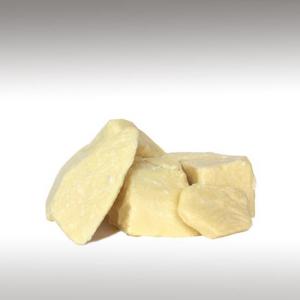

Theobroma Cacao also Cacao tree and Cocoa tree, is a small 4 - 8 m evergreen tree in the family Malvaceae native to the deep tropical regions of Central and South America. Its seeds, cocoa beans, are used to make Cocoa mass, Cocoa powder, and chocolate.
The flowers are produced in clusters directly on the trunk and older branches. The fruit, called a Cacao pod, is ovoid, 15 - 30 cm long and 8 - 10 cm wide, ripening yellow to orange, and weighs about 500 g when ripe. The pod contains 20 to 60 seeds, usually called "Beans", embedded in a white pulp. Each seed contains a significant amount of fat (40 - 50%) as Cocoa Butter. Their most noted active constituent is Theobromine, a compound similar to Caffeine.
The flowers are produced in clusters directly on the trunk and older branches. The fruit, called a Cacao pod, is ovoid, 15 - 30 cm long and 8 - 10 cm wide, ripening yellow to orange, and weighs about 500 g when ripe. The pod contains 20 to 60 seeds, usually called "Beans", embedded in a white pulp. Each seed contains a significant amount of fat (40 - 50%) as Cocoa Butter. Their most noted active constituent is Theobromine, a compound similar to Caffeine.
The generic name is derived from the Greek for "Food of the Gods". Theobromagrandiflorum, is a closely related species found in Colombia, Peru, Bolivia, Africa and Brazil. Cacao Butter is widely distributed from southeastern Mexico to the Amazon basin. greatest Cacao genetic diversity to a bean-shaped area that encompasses the border between Brazil and Peru and the southern part of the Colombian-Brazilian border. Climate models indicate that at the peak of the last ice age 21,000 years ago, when habitat suitable for Cacao was at its most reduced, this area was still suitable, and so provided a refugium for the species.
The first Europeans to encounter Cacao were Christopher Columbus and his crew in 1502, when they captured a canoe at Guanaja that contained a quantity of mysterious-looking "Almonds". The first real European knowledge about chocolate came in the form of a beverage which was first introduced to the Spanish at their meeting with Moctezuma in the Aztec capital of Tenochtitlan in 1519.
Cocoa Butter, also called Theobroma oil, is a pale-yellow, edible vegetable fat extracted from the Cocoa bean. Cocoa Butter has a cocoa flavor and aroma.
Cocoa Butter is obtained from whole Cocoa beans, which are fermented, roasted, and then separated from their hulls. The most common form of Cocoa Butter has a melting point of around 34 - 38 °C.
Submitted by OperaDreamhouse (September 16, 2014)
Mango Seed Butter (Mangifera Indica) ☸ Base oils ☸ Base / General
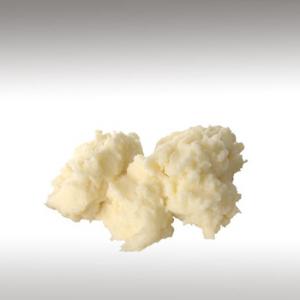

Mangifera Indica seed oil and Mangifera Indica (Mango) Seed Butter are the fats expressed from the seeds (also called kernels) of Mangifera Indica.
Mango butter is obtained from the fruit seed of Mango Tree, which is native to the sub-tropics of India and other similar climates throughout the world. Its chemical structure is similar to both Cocoa Butter and Shea Butter and is used in similar applications.
Mango is a large, evergreen tree, thought to have originated in the Indo-Burma region and is now grown throughout the world. It has been cultivated for over 6,000 years.
Mango Butter is naturally white or yellow in color with a slight odor. Mango Kernels have an oil contens of 8% to 10%.
Mangoes are an excellent nutritional source, containing an abundance of vitamins, minerals and antioxidants - calcium, potassium, Vitamin A, E and C and several B Vitamins. Many studies have shown the health-promoting benefits of Mango.
Mango butter is obtained from the fruit seed of Mango Tree, which is native to the sub-tropics of India and other similar climates throughout the world. Its chemical structure is similar to both Cocoa Butter and Shea Butter and is used in similar applications.
Mango is a large, evergreen tree, thought to have originated in the Indo-Burma region and is now grown throughout the world. It has been cultivated for over 6,000 years.
Mango Butter is naturally white or yellow in color with a slight odor. Mango Kernels have an oil contens of 8% to 10%.
Mangoes are an excellent nutritional source, containing an abundance of vitamins, minerals and antioxidants - calcium, potassium, Vitamin A, E and C and several B Vitamins. Many studies have shown the health-promoting benefits of Mango.
Submitted by OperaDreamhouse (September 16, 2014)
Kpangnan Butter (Vitellaria Paradoxa Nilotica) ☸ Base oils ☸ Base / General
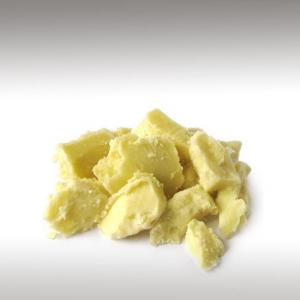

Vitellaria Paradoxa Nilotica (Shea Butter tree) is an indigenous African tree species that is widely distributed in the dry areas of northern and eastern Uganda.
Vitellaria Nilotica Butter is produced only in Uganda and Sudan and is softer, melts at a lower temperature, has a higher absorbtion rate and smells less strongly than the western kind (Vitellaria Paradoxa), that is produced in Ghana among others.
Real Shea Butter is an off- white or ivory-colored fat extracted from the nut of the African Shea tree (Vitellaria Paradoxa). Kpangnan Butter is yellow in color and comes from the African Butter Tree.
Kpangnan butter is affectionately known as "Yellow Shea Butter" or "Golden Shea Butter".
This Shea Butter is very smooth, with a firm consistency that is to be expected from raw shea. It has a light nutty smell that is also typical of real Shea.
Most people gravitate towards Kpangnan because of the consistency, the tale of it being Golden Shea, and its a bit cheaper to supply. Eastern African (Kpangnan Butter) Shea Butter is softer than West African Shea Butter. It is creamier and silky, making it quick and easy to apply. Eastern Shea Butter has a sweeter scent than West African shea butter.
Chemical structure:
Shea Butter is a triglyceride composed primarily of a monounsaturated fatty acid - oleic acid(omega-9) (40-60%), and a saturated fatty acid - stearic acid (20 - 50%). These components make it melt around body temperature, and absorb well into skin.
Shea Paradoxa contains more Vitamin A and is better if you want to use it on scars. The Western Shea contains more Vitamin E than the nilotica.
Kpangnan unsaponifiable value is not as high as unrefined Shea Butter.
Vitellaria Nilotica Butter is produced only in Uganda and Sudan and is softer, melts at a lower temperature, has a higher absorbtion rate and smells less strongly than the western kind (Vitellaria Paradoxa), that is produced in Ghana among others.
Real Shea Butter is an off- white or ivory-colored fat extracted from the nut of the African Shea tree (Vitellaria Paradoxa). Kpangnan Butter is yellow in color and comes from the African Butter Tree.
Kpangnan butter is affectionately known as "Yellow Shea Butter" or "Golden Shea Butter".
This Shea Butter is very smooth, with a firm consistency that is to be expected from raw shea. It has a light nutty smell that is also typical of real Shea.
Most people gravitate towards Kpangnan because of the consistency, the tale of it being Golden Shea, and its a bit cheaper to supply. Eastern African (Kpangnan Butter) Shea Butter is softer than West African Shea Butter. It is creamier and silky, making it quick and easy to apply. Eastern Shea Butter has a sweeter scent than West African shea butter.
Chemical structure:
Shea Butter is a triglyceride composed primarily of a monounsaturated fatty acid - oleic acid(omega-9) (40-60%), and a saturated fatty acid - stearic acid (20 - 50%). These components make it melt around body temperature, and absorb well into skin.
Shea Paradoxa contains more Vitamin A and is better if you want to use it on scars. The Western Shea contains more Vitamin E than the nilotica.
Kpangnan unsaponifiable value is not as high as unrefined Shea Butter.
Submitted by OperaDreamhouse (September 16, 2014)
Cocoa Butter (Theobroma Cacao) ☸ Base oils ☸ Spiritual Practises


The Maya believed the Kakaw (Cacao) was discovered by the gods in a mountain that also contained other delectable foods to be used by them. According to Maya mythology, the Plumed Serpent gave Cacao to the Maya after humans were created from maize by divine grandmother goddess Xmucane.
Submitted by OperaDreamhouse (September 16, 2014)
Mango Seed Butter (Mangifera Indica) ☸ Base oils ☸ Medicine / Health


Mango Butter is known for its abundant emollient properties and is known for its ability to aid in healing wounds and regenerative cells. It has a long history of use in tropical regions as a skin softener and for its ability to moisturize, protect, restore and reduce the degeneration of skin cells. It is also known to protect against UV radiation.
Mango Butter has a protective effect against UV radiation. Dermatologists often recommend Mango Butter for the treatment of wrinkles
Mango Butter has a protective effect against UV radiation. Dermatologists often recommend Mango Butter for the treatment of wrinkles
Submitted by OperaDreamhouse (September 16, 2014)
Kpangnan Butter (Vitellaria Paradoxa Nilotica) ☸ Base oils ☸ Beauty / Cosmetics


Kpangnan Butter is softer - powdery like - leaving you with a drier yet, silky feeling. Shea Butter is a bit harder than Kpangnan Butter and upon application leaves a bit of shine while absorbing into the skin. If you want quality, go with 100% unrefined Shea Butter for the hair and skin.
Submitted by OperaDreamhouse (September 16, 2014)
Spirulina (Arthrospira Platensis and Arthrospira Maxima) ☸ Ingredients ☸ Base / General
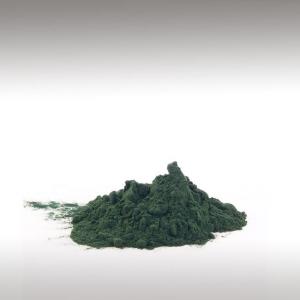

Arthrospira is a genus of free-floating filamentous cyanobacteria characterized by cylindrical, multicellular trichomes in an open left-hand helix. There is a dietary supplement made from Arthrospira Platensis and Arthrospira Maxima, known as Spirulina.
The Maxima and Platensis species were once classified in the genus Spirulina. There is now agreement that they are in fact Arthrospira; nevertheless, and somewhat confusingly, the older term Spirulina remains in use for historical reasons.
Arthrospira Platensis and Arthrospira Maxima occur naturally in tropical and subtropical lakes with high pH and high concentrations of carbonate and bicarbonate. Arthrospira Platensis occurs in Africa, Asia and South America, whereas Arthrospira Maxima is confined to Central America and Arthrospirapacifica is endemic to Hawaii Islands of America.
Arthrospira Platensis and Arthrospira Maxima occur naturally in tropical and subtropical lakes with high pH and high concentrations of carbonate and bicarbonate. Arthrospira Platensis occurs in Africa, Asia and South America, whereas Arthrospira Maxima is confined to Central America and Arthrospirapacifica is endemic to Hawaii Islands of America.
Most cultivated Spirulina
is produced in open channel raceway ponds, with paddle-wheels used to
agitate the water. The largest commercial producers of Spirulina are
located in the United States, Thailand, India, Taiwan, China, Pakistan, Burma, Greece and Chile.
Submitted by OperaDreamhouse (September 11, 2014)
Oil Bottles ☸ Tools ☸ Base / General
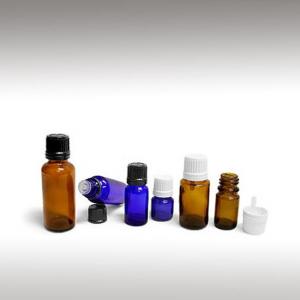

Glass dropper bottles are available in a great selection of sizes, shapes and colors, from the 1/3 oz green glass boston round to the 2 oz oval amber bottles.
The glass euro dropper bottles have many features that make them great bottles for essential oils and oils. The glass bottles come complete with orifice reducer for controlled essential oil dispensing. Dark color glass bottles such as blue and amber could possibly be helpful for light sensitive products.
Essential oil sample bottles are a convenient, simple way to share essential oil and oils samples with friends, family, and prospective customers and distributors.
The glass euro dropper bottles have many features that make them great bottles for essential oils and oils. The glass bottles come complete with orifice reducer for controlled essential oil dispensing. Dark color glass bottles such as blue and amber could possibly be helpful for light sensitive products.
Essential oil sample bottles are a convenient, simple way to share essential oil and oils samples with friends, family, and prospective customers and distributors.
Submitted by OperaDreamhouse (September 11, 2014)
Sea-Buckthorn Oil (Hippophae Rhamnoides) ☸ Base oils ☸ Base / General
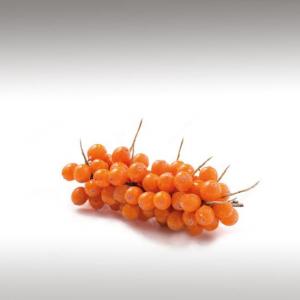

Hippophae Rhamnoides, common Sea-Buckthorn, is a species of flowering plant in the family Elaeagnaceae. Hippophae Rhamnoides
can grow 2 - 4 m high. The leaves are alternate, narrow and lanceolate,
with silvery-green upper faces.
It is dioecious, which means that the male and female flowers grow on different shrubs. The male inflorescence is built up of four to six flowers without petals. The female inflorescence consists normally of only one flower without petals and contains one ovary and one ovule. Male plants need to be planted near the female plants to allow fertilisation and fruit production. The oval or lightly roundish fruits grow in compact grapes varying from pale yellow to dark orange and weighing from 0,2 g to 1 g. Oil can be extracted from either the seeds or the pulp of the fruit.
Hippophae Rhamnoides is a native plant throughout Europe, including Britain, from Norway south and east to Spain and Asia to Japan and the Himalayas.
It is grown as an agricultural plant in Germany, France, Finland, India and China. China is the largest agricultural producer.
The origin of the plant is Nepal and it migrated to other parts of Eurasia after the last Ice Age. It is also cultivated as an ornamental plant in gardens and parks.
Chemical structure:
Oils from Sea-Buckthorn seeds and pulp differ considerably in fatty acid composition. While linoleic acidand α-linolenic acidare the major fatty acids in seed oil, Sea-Buckthorn pulp oil contains approximately 65% combined of the monounsaturated fatty acid, palmitoleic acid, and the saturated fattyacid, palmitic acid. Few other vegetable oils contain a similar quantity of these fatty acids. Both the seed and pulp oils are rich in tocopherols, tocotrienols and plant sterols. In addition, the pulp oil contains especially high levels of carotenoids.
It is dioecious, which means that the male and female flowers grow on different shrubs. The male inflorescence is built up of four to six flowers without petals. The female inflorescence consists normally of only one flower without petals and contains one ovary and one ovule. Male plants need to be planted near the female plants to allow fertilisation and fruit production. The oval or lightly roundish fruits grow in compact grapes varying from pale yellow to dark orange and weighing from 0,2 g to 1 g. Oil can be extracted from either the seeds or the pulp of the fruit.
Hippophae Rhamnoides is a native plant throughout Europe, including Britain, from Norway south and east to Spain and Asia to Japan and the Himalayas.
It is grown as an agricultural plant in Germany, France, Finland, India and China. China is the largest agricultural producer.
The origin of the plant is Nepal and it migrated to other parts of Eurasia after the last Ice Age. It is also cultivated as an ornamental plant in gardens and parks.
Chemical structure:
Oils from Sea-Buckthorn seeds and pulp differ considerably in fatty acid composition. While linoleic acidand α-linolenic acidare the major fatty acids in seed oil, Sea-Buckthorn pulp oil contains approximately 65% combined of the monounsaturated fatty acid, palmitoleic acid, and the saturated fattyacid, palmitic acid. Few other vegetable oils contain a similar quantity of these fatty acids. Both the seed and pulp oils are rich in tocopherols, tocotrienols and plant sterols. In addition, the pulp oil contains especially high levels of carotenoids.
Submitted by OperaDreamhouse (September 10, 2014)
African Bluegrass Essential Oil (Cymbopogon Validus) ☸ Essential oils ☸ Base / General
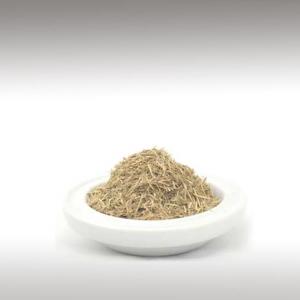

African Bluegrass is a fast growing and invasive aromatic
gray-green grass, with a unique lemon odor. It is sometimes known by its
more common names of giant turpentine grass, tambookie grass, or
tambuti. This wild grass is in the same family as Palmarosa, Gingergrass, Lemongrass and Citronella. It’s aroma is more complex and rich than any of the others in its family. Aromatically, it is in a world of its own.
Botanical Name: Cymbopogon validus
Common Method of Extraction: Steam distilled
Part Typically Used: Wild grass leaves, grass tufts
Color: Light to mid yellow in hue
Consistency: Thin
Perfumery Note: Middle
Strength of Initial Aroma: Lemony/grass smell with slightly herbaceous base notes. Medium to Strong.
Cymbopogon comes from the Greek ‘ kumb’ meaning nacelle (boat) and "pogon" meaning bores or beard. It is said that it appeared in the composition of holy oil (olive oil, grooves, myrrh and citronella).
Cymbopogon validus oil is a pure therapeutic quality aromatherapy essential oil, produced using wild-crafted plants and traditional methods, from South Africa, obtained from the grass.
Submitted by OperaDreamhouse (September 10, 2014)
Blackcurrant Bud Distillate (Ribes Nigrum) ☸ Herbal distillates ☸ Base / General
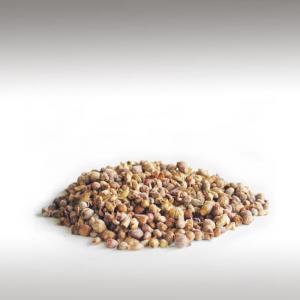

The Blackcurrant (Ribes nigrum) is a woody shrub in the family Grossulariaceae grown for its piquant berries. It is native to temperate parts of central and northern Europe and northern Asia where it prefers damp fertile soils and is widely cultivated both commercially and domestically.
The Back currantshrub is native to Europe and parts of Asia and is particularly popular in Eastern Europe and Russia. It is winter hardy but cold weather at flowering time during the spring reduces the size of the crop.
Bunches of small, glossy black fruit develop along the stems in the summer and can be harvested by hand or by machine. The fruit is rich in Vitamin C, various other nutrients, phytochemicals and antioxidants.
Ribes nigrum Buds essential oils obtained from three Blackcurrant varieties. Essential oils where distillation by steam distillation. In that time we get and blackcurrant distillate.
The Back currantshrub is native to Europe and parts of Asia and is particularly popular in Eastern Europe and Russia. It is winter hardy but cold weather at flowering time during the spring reduces the size of the crop.
Bunches of small, glossy black fruit develop along the stems in the summer and can be harvested by hand or by machine. The fruit is rich in Vitamin C, various other nutrients, phytochemicals and antioxidants.
Ribes nigrum Buds essential oils obtained from three Blackcurrant varieties. Essential oils where distillation by steam distillation. In that time we get and blackcurrant distillate.
Submitted by OperaDreamhouse (September 10, 2014)
Damask Rose Essential Oil (Rosa Damascena) ☸ Essential oils ☸ Medicine / Health
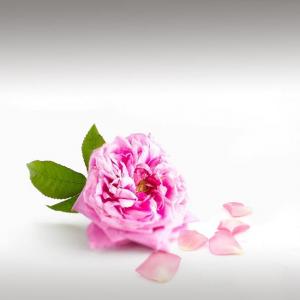
 Most of Rosa Dascena Essential Oil effects are hypnotic, analgesic,anticonvulsant effects. The respiratory, cardiovascular, laxative, antidiabetic, antimicrobial, anti-HIV, anti-inflammatory and antioxidant
Most of Rosa Dascena Essential Oil effects are hypnotic, analgesic,anticonvulsant effects. The respiratory, cardiovascular, laxative, antidiabetic, antimicrobial, anti-HIV, anti-inflammatory and antioxidant
Several pharmacological properties including anti-HIV, antibacterial, antioxidant, antitussive, hypnotic, antidiabetic and relexant effect on tracheal chains have been reported for this plant.
The most therapeutic effects of Rosa Damascena in ancient medicine are ancluding treatment of abdominal and chest pain, strengthening the heart, treatment of menstrual bleeding and digestive problems, and reduction of inflammation, especially of the neck. North American Indian tribes used a decoction of the root of Rosa Damascena plant as a cough remedly to ease childrens cough.
Rose Oil heals depression, grief, nervous stress and tension. It helps in the reduction of thirst, healing oil caugh, special complaints of women, wound healing, and skin health. Therapy of Rose oil is helpful for some allergies, headaches and migraine.
Several Pharmacological studies been performed on Rosa Damascena to evaluate their effects on the central nervous system. Some of these effects that evaluated are hypnotic, anticonvulsant, anti-depressant, anti-anxiety, analgesic effects and nerve growth.
One of the effects of Rosa damascea on central nervous system is its hypnotic effect.
The ethanol crude extract of Rosa Damascena and its fractions were also investigated in mice. It was shown that they can prolong the pentobarbital induced sleeping time comparable to diazepam. Flavonoids have been shown to have anxiolytic andantidepressant activity in numerous studies. It can be suggested that flavonoids of the Rosa Damascena contribute to the hypnotic effect.
The analgesic effext of Rosa Damascena is also reported. It has been reported that Rosa Damascena cintains flavonoid. Therefore, it seems that these compounds have some role in the analgesic effect of the plant. Therefore Rosa Damascena may have beneficial effect in patients suffering from dementia.
Other components of essential oil Rosa Damascena such as geraniol and eugenol have been shown to have antiepileptic effect.
The effects of the essential oil of Rosa damascena as an adjunct in treatment of chikdren with refractory seizures were also studied and showed a significant reduction in the mean frequency of seizures in patients using essential oil of the plant. Therefore, the essential oil of Rosa Damascena has beneficial antiepileptic effect in children with refractory seizures.
Ethanolic and aqueous extracts of this plantsignificantly reduce number of coughs induced by citric acid.
The effects of water and methanol extracts of Rosa Damascena on HIV infection were studied in vitro. Rose Damascena exhibited some anti-HIV activity.
It has been found that Rosa Damascena exert an anti-diabetic effect. anti-diabetic effect of this plant maybe mediated by inhibition of alfa-glucosidase that suppressed carbohydrte absorption from the small intestine and can reduce the postprandial glucose level.
Rosa Damascena Essential Oil has wide spectrum antimicrobial activities. Essential oil, absoliute and hydrosol are important products that showed these effects. Rose Essential oil has strong antibacterial activity against Escherichia coli, Pseudomonas aeruginosa, B. sutilis, Staph. aureus, Chromobacterium violaceun and Erwinia carotovora strains. The Chromobacteriuk violaceum was the most sensitive microorganism against Rose Essential Oil.
Antibacterial effect of rose oil maybe mediated by these components : citrenellol, geraniol and nerol.
Rosa Damascena has high antioxidant activities. Sources of natural antioxidants are primarily phenolics compuond that are found in all plant parts. Rosa Damascena contains, vitamin C which has antioxidant and anti-inflammatory effects.
This herb have been conventionally used in the Ayurvedic system of medicine since time immemorial and reportedly possess anti-infective and anti-inflammatory properties. this essential oil contains several components such as terpenes, glycosides, flavonoids and anthocyanins that have beneficial effects on human health.
Submitted by OperaDreamhouse (August 28, 2014)
Page 33 of 48

